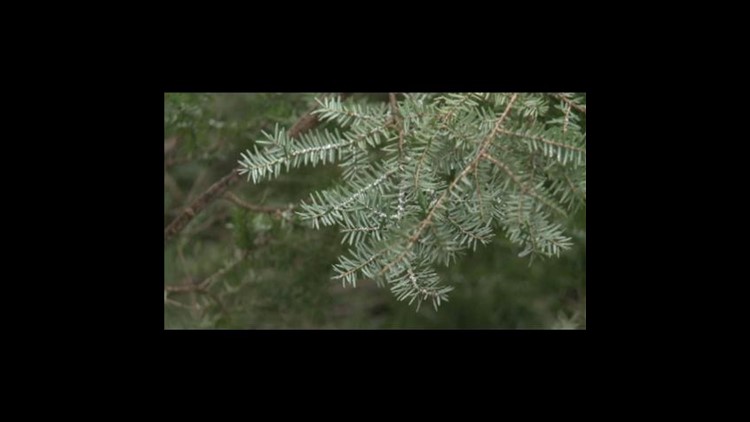PORTSMOUTH, NH (NEWS CENTER) -- Every fall, the management of Water Country Water Park brings in a certified arborist to inspect the trees that provide shade and enhance the beauty of the park to make sure they are safe, healthyand secure. This year he found something they never expected.
"We didn't really notice much of anything with these trees," stated Cristine Trayner, Water Country's marketing manager. "It is easy to miss."
What they did notice was that some of the hemlock trees were losing lots of needles, but they didn't think much of it.
When the arborist took a closer look, he discovered the trees were infected with hemlock woolly adelgid, a small insect with a big appetite. He called in a specialist with the state to confirm his finding, and to develop a plan to remove the infected trees. In all, about 100 trees had to be removed, chipped up and burned to reduce the risk of the insects spreading elsewhere.
"We had to do such a dramatic removal really for safety purposes," explained Trayner."We needed to make sure that we protect our guests."
Removing the trees, stumps and disposing of them will cost the park thousands of dollars, but luckily, the woods in and around theproperty are very diverse, so the changes will not be too dramatic when they reopen next year.
The park's tree removal operation is one of the first, and largest, to date in northern New England.
Hemlock woolly adelgid originally came to the United States from Asia, and has spread rapidly. It was first detected in Maine in ornamental plantings in the late 1990s, with it first detected in a forest on Kittery Point near the turn of the century.
Now it can be found in 38 communities stretching from Kittery to the eastern Lincoln County town of Bristol. The infestations that have been discovered so far are mainly along the coast, but have also been discovered insome sections of interior York County. The increase in detections has lead the state to increase the size of the area which is under quarantine.The hemlock wooly adelgidlooks like tiny cotton balls growing on the under side of the tree's needles and branches, not an insect in the traditional since of a spider of mosquito.
"They'll look at the hemlock woolly adelgid wool and they'll say 'where is the insect?'" said Allison Kanoti, a forest entomologist with the Maine Forest Service.
Under the wool there is a very small six-legged insect,and like an aphid,it has a piercing mouth that it uses to suck the nutrients out from the needles she explained. The insect also injects its saliva into the tree, which scientists believe may be the true source of damage to the tree.
"Needles are their energy factories, and if they don't have needles to make energy, they can maintain themselves and grow," explained Kanoti. The infestation zaps that energy, causing the tree to lose its needles, and over time can kill the tree.
While hemlock is not an economically important part of the forest, only about ten percent of the wood harvested annually in Maine is hemlock, it is vital to the health of the forest and wildlife.
"In southern Maine, a lot of hemlock grows along our waterways, and so the animals and the streams where hemlock is a dominate cover can be effected by that decline," she stated.
"You are picking away at the diversity of the forest and diversity can be important in allowing a forest to be resilient," added Kanoti.
The insect is spreading in Maine. In 2010, it had been discovered in eight towns. This year that number has grown to thirty-eight.
The Maine Forest Service has employed all kinds of tools and tactics to try to slow that spread, including releasing beetles that feed on the adelgid in a hopes of finding a natural predator that can reduce its numbers.
Entomologists also hope that by informing people about the insect and what to look for, they can better manage its impact on the state's forests.
"Our goal is to really slow artificial spread," said Kanoti. "We recognize we cannot stop natural spread of these pests."
She hopes everyone from homeowners to hikers will take the time tolearn what the hemlock woolly adelgid looks like and be on the lookout for it when they are out and about.



